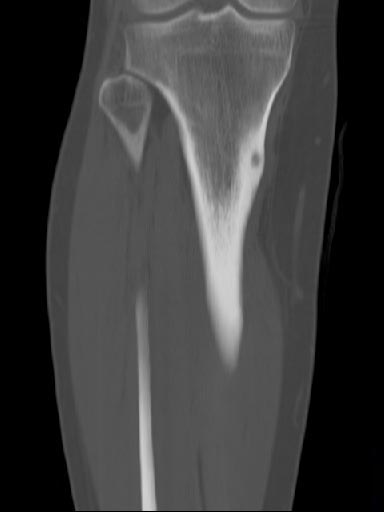Osteoid osteoma is a condition that often affects individuals in their adolescence or early adulthood. It is characterized by the development of a benign bone tumor, typically found in long bones such as the femur and tibia. This condition can cause significant discomfort and pain, particularly at night, which may disrupt daily activities and sleep patterns. Understanding the nature of osteoid osteoma is crucial for both patients and healthcare providers to ensure timely diagnosis and appropriate treatment.
This comprehensive guide delves into the intricacies of osteoid osteoma, drawing insights from reputable sources like Orthobullets, AAOS, and Medbullets. By exploring its causes, symptoms, diagnostic methods, and treatment options, this article aims to provide readers with a clear understanding of the condition. Additionally, it offers practical advice for managing symptoms and achieving a swift recovery, making it an invaluable resource for those affected by osteoid osteoma.
Understanding Osteoid Osteoma
An osteoid osteoma is a noncancerous bone tumor that predominantly affects the long bones of the body, such as the femur and tibia. This type of tumor is relatively common among young individuals, especially males, and often manifests as localized pain that intensifies during the night. The pain associated with osteoid osteoma can be alleviated with nonsteroidal anti-inflammatory drugs (NSAIDs), which are commonly prescribed for symptom management.
Despite being benign, osteoid osteomas can cause considerable discomfort and interfere with daily life. They are typically small, measuring less than 2 cm in diameter, and consist of a central nidus surrounded by reactive bone tissue. The exact cause of osteoid osteoma remains unclear, but it is believed to arise from abnormal bone growth involving osteoblasts, the cells responsible for bone formation.
Diagnosing osteoid osteoma involves a combination of clinical evaluation, imaging studies, and sometimes biopsy. Radiographic imaging, such as X-rays, CT scans, and MRI, plays a pivotal role in identifying the characteristic features of the tumor, including the presence of a well-defined nidus within the affected bone.
Variations in Bone Tumors
Among the various types of benign bone tumors, osteoid osteoma stands out due to its distinct presentation and behavior. While other benign tumors like osteochondroma and osteoma may have different characteristics, osteoid osteoma is notable for its tendency to cause persistent pain. This distinguishes it from other benign lesions that may remain asymptomatic or present with milder symptoms.
The classification of bone tumors into different categories helps in guiding treatment strategies. For instance, giant cell tumors and aneurysmal bone cysts require more aggressive interventions compared to osteoid osteoma, which often responds well to conservative management. However, the unpredictable course of some benign bone tumors, such as Langerhans-cell histiocytosis, necessitates close monitoring and tailored treatment approaches.
In pediatric cases, the presence of benign bone tumors like osteoid osteoma requires careful consideration of growth plate involvement and potential impact on skeletal development. Early detection and appropriate management are essential to prevent complications and ensure optimal outcomes in growing children.
Insights from Orthobullets
Orthobullets provides valuable insights into the management of osteoid osteoma, emphasizing the importance of recognizing its typical location in the proximal third of the tibia or femur. The use of advanced imaging techniques, particularly CT scans, is highlighted as crucial for identifying the precise location of the nidus, which is essential for planning surgical intervention if necessary.
In addition to pharmacological treatments, minimally invasive procedures such as radiofrequency ablation have gained popularity for treating osteoid osteoma. These procedures offer effective relief with minimal recovery time, making them an attractive option for patients seeking rapid resolution of symptoms. Orthobullets also underscores the significance of patient education in managing expectations and ensuring compliance with treatment regimens.
For spinal osteoid osteoma and osteoblastoma, the second decade of life marks a critical period for onset. CT imaging reveals specific characteristics, such as low attenuation areas with central calcification, aiding in accurate diagnosis. Understanding these nuances is vital for orthopedic specialists when devising treatment plans for affected individuals.
Management and Recovery
Effective management of osteoid osteoma involves a multidisciplinary approach, combining medical, surgical, and rehabilitative strategies. NSAIDs remain the cornerstone of initial treatment, providing symptomatic relief while more definitive interventions are considered. In cases where conservative measures fail, surgical excision or minimally invasive techniques like radiofrequency ablation offer viable alternatives.
Recovery from osteoid osteoma largely depends on the chosen treatment modality and individual patient factors. Most patients experience significant improvement following appropriate intervention, with many achieving complete resolution of symptoms. Post-treatment rehabilitation focuses on restoring function and preventing recurrence, incorporating exercises and lifestyle modifications as needed.
Continuous advancements in diagnostic tools and therapeutic options promise improved outcomes for individuals with osteoid osteoma. Staying informed about the latest developments in orthopedic care ensures that patients receive the most effective and up-to-date treatments available, facilitating quicker recovery and enhanced quality of life.

